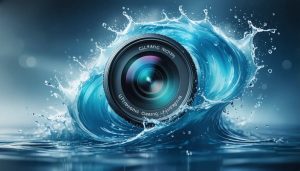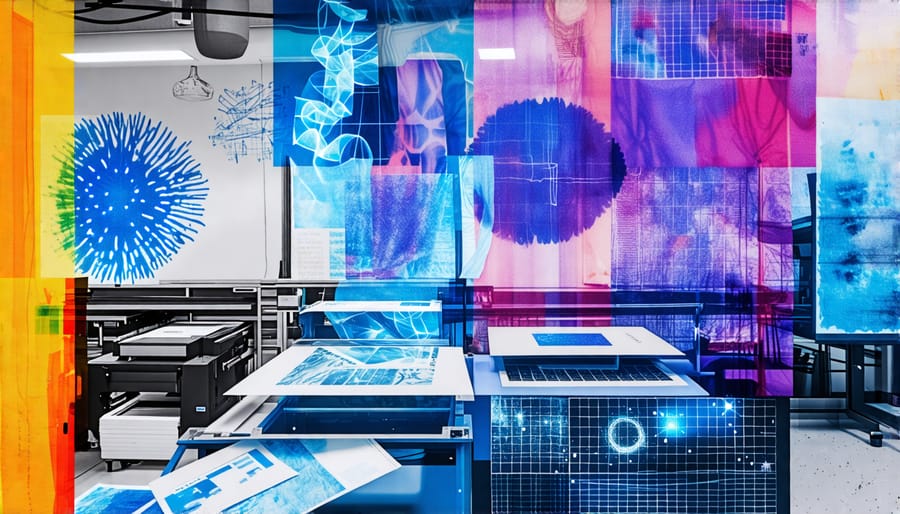
Explore different photographic printing processes by diving straight into the distinct techniques that cater to various artistic and technical needs. Start with **Digital Inkjet Printing** for its versatility and ease; it’s ideal for hobbyists wanting high-quality home prints. Embrace **Silver Gelatin Prints** for traditional black-and-white enthusiasts seeking rich contrast and depth—ideal for fine art photographers. Experiment with **Cyanotype Printing**, a historic method creating stunning blueprints using UV light exposure, perfect for those interested in alternative, expressive styles. Delve into **Giclée Printing**, a preferred option for professionals aiming for archival quality with exceptional color accuracy and detail, suitable for gallery displays. Each method presents a unique opportunity to enhance your craft, catering to varied artistic visions and professional requirements.
Traditional Photographic Printing Processes
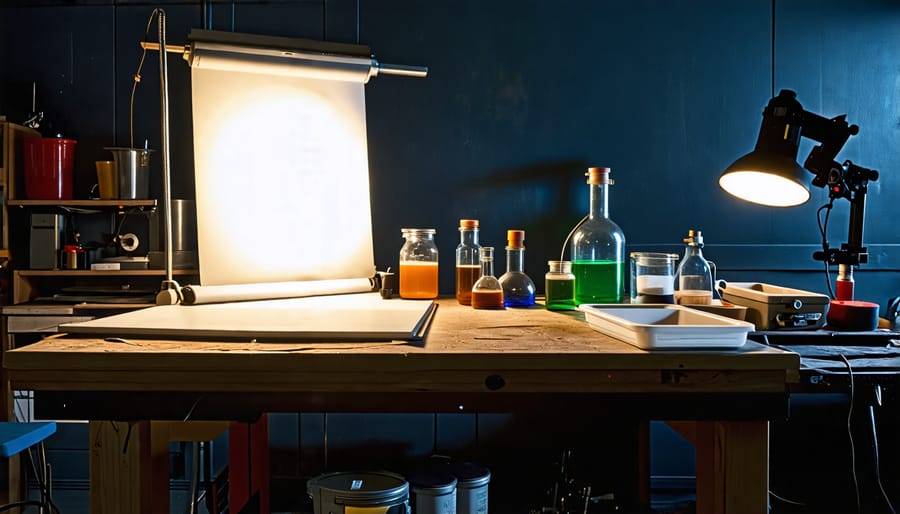
Darkroom Printing
When it comes to the timeless art of photography, darkroom printing holds a special place in the hearts of many enthusiasts and professionals alike. This traditional process, which involves developing prints in a darkroom using chemicals, is cherished for its hands-on approach and the unique sense of connection it fosters with the imagery. The excitement begins the moment you hold your camera and capture that perfect shot, knowing you’ll later translate it into a tangible photograph by immersing the light-sensitive paper in developer, stop bath, and fixer solutions.
For those who practice darkroom printing, there’s an unmistakable allure in watching an image gradually appear on a sheet of paper. Unlike digital printing, which offers speed and precision, darkroom printing allows photographers to experiment with various techniques, such as dodging and burning, to enhance the tonal range and contrast of their prints. This tactile, slow-process approach provides a deep understanding of photographic principles.
Photographers like Michael Kenna and Sally Mann have been known to favor this method for its artistic flexibility and the nostalgia it evokes. Each print becomes a unique piece, reflecting the photographer’s intent and skill. Darkroom printing isn’t just a nostalgic nod to the past; it’s a creative process that continues to inspire and connect photographers with the roots of their craft.
Cyanotype
The cyanotype process, steeped in rich history, transforms sunlight into ethereal blue-hued images and holds a special place in the evolution of photographic printing. Originating in the mid-19th century, its invention is credited to Sir John Herschel in 1842. A significant milestone was its popularization by the pioneering photographer Anna Atkins, who used it to illustrate her seminal book on algae in 1843, creating the first known photographically illustrated book.
Cyanotypes offer a tactile and artistically liberating endeavor, appealing to both enthusiasts and professionals interested in low-cost, chemistry-driven creativity. The process involves coating paper with iron salt solutions, placing objects or negatives on it, and then exposing it to UV light – typically from the sun. The unexposed areas remain white, while the exposed areas turn a distinctive Prussian blue after rinsing with water.
For those eager to experiment, remember a few practical tips. Start with thoroughly mixing your chemicals in a dimly lit area to prevent unintended exposure. When coating your chosen material, aim for evenness to avoid streaks. Experiment with materials such as fabric or wood, and consider using digital negatives for modern adaptations. As cyanotypes require minimal equipment and no darkroom, they’re perfect for anyone wanting to explore alternative processes in a hands-on way in their backyard or even indoors near a sunny window.
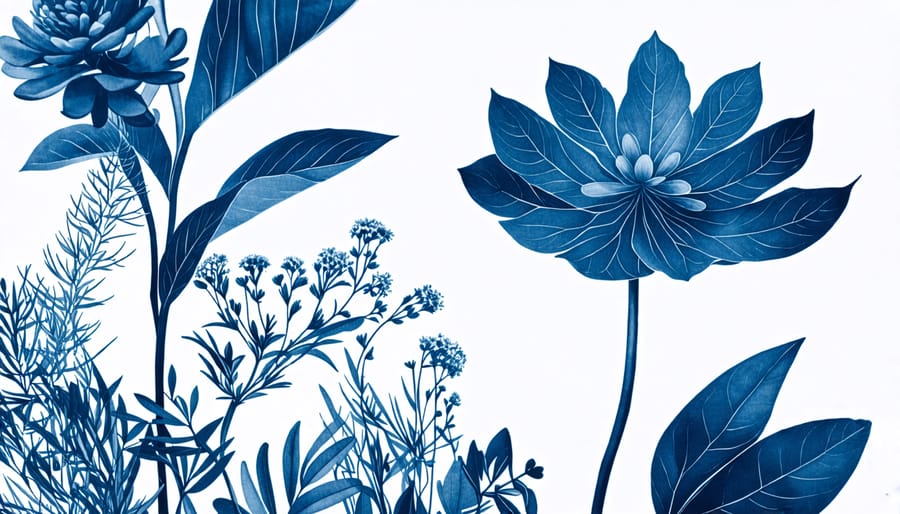
Modern Photographic Printing Techniques
Inkjet Printing
In recent years, inkjet printing has surged in popularity among both amateur and professional photographers due to its incredible versatility, cost-effectiveness, and ability to produce high-quality images. At the heart of this appeal is the capacity to print on a wide variety of media, ranging from glossy photo papers to fine art canvases, allowing photographers to experiment and match prints with their creative vision.
It wasn’t too long ago that producing prints from home or a studio was synonymous with expensive lab services or complicated darkroom processes. Inkjet printers have democratized this aspect of photography, making it accessible for artists at all experience levels. Modern inkjet printers deliver outputs that rival those of traditional methods, with rich colors and sharp details that satisfy even the most discerning eyes.
One of the key aspects of inkjet technology is the use of pigment-based inks, which offer superior longevity and fade resistance compared to dye-based inks. This ensures that images endure the test of time, making them ideal for archival purposes and for artists who sell their work.
A real-world testament to inkjet’s versatility is the story of a landscape photographer who transitioned from using a lab for prints to setting up a home inkjet printing station. Besides enjoying cost savings, they reported greater creative control over the final product, which led to a more personalized touch in gallery exhibitions.
While initial setup costs might seem daunting, the long-term savings and creative autonomy offered by inkjet printing present compelling advantages. Photographers venturing into inkjet printing should consider experimenting with different paper types and printers, as this can lead to discovering new aesthetic qualities in their images. With the continuous advancement in technology, inkjet printing remains not just a convenient option, but a continually evolving tool for artistic expression.
Dye-Sublimation Printing
Dye-sublimation printing offers a unique approach to producing vibrant and durable photographic prints, making it an appealing choice for both enthusiasts and professionals. Unlike traditional inkjet printing, dye-sublimation technology uses heat to transfer dye onto materials, resulting in seamless color transitions and impressive image quality. This method is particularly favored for printing on substrates such as fabric, metal, or specially coated paper, providing a level of flexibility that expands creative possibilities.
One of the standout benefits of dye-sublimation printing is its ability to produce photos with rich, vivid colors and deep blacks, essential for detailed and expressive photography. The process embeds the dye into the substrate, making prints highly resistant to fading, even when exposed to light or moisture. This longevity makes it ideal for creating prints meant to stand the test of time, such as family portraits or creative displays in high-traffic areas.
However, there are some drawbacks to consider. The initial cost of dye-sublimation printers can be higher than standard inkjet printers, which might deter hobbyists or those just starting their photographic journey. Additionally, the choice of materials is crucial, as not all surfaces are compatible with this printing process, limiting some applications.
Dye-sublimation is particularly useful in niche markets like custom apparel or personalized merchandise, where the ability to print on non-paper substrates is invaluable. Professional photographers who specialize in commercial photography or product shoots often rely on this technique for producing stunning visuals that require durable and visually striking results. Whether you’re a professional seeking robust print solutions or a hobbyist exploring new mediums, dye-sublimation offers a fascinating blend of creativity and practicality in the world of photographic printing.
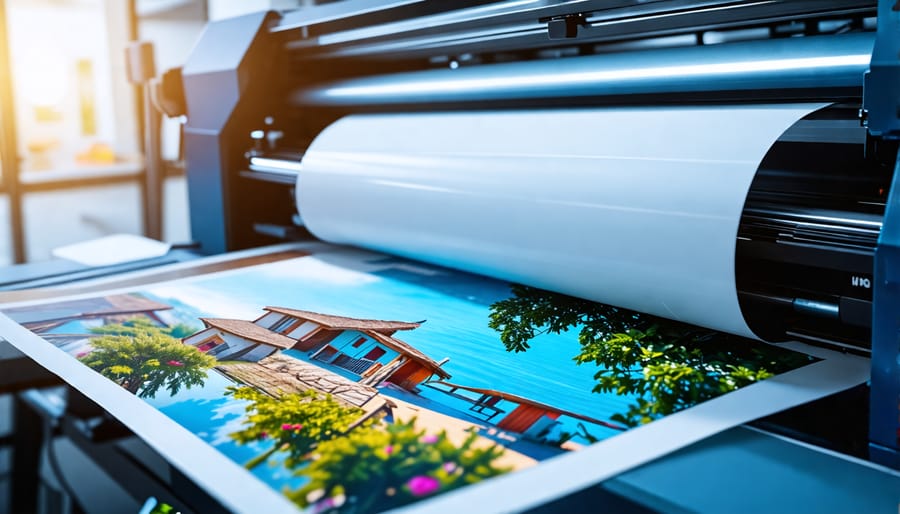
Choosing the Right Printing Process for Your Work
Choosing the right printing process can be pivotal in realizing your photographic vision, helping to showcase your work in the way you envisioned. The decision often hinges on a few key factors: your photography style, your project’s objectives, and your available resources. First off, consider whether your style is more traditional or experimental. For those working with classic landscapes and portraits, a process like giclée printing, known for its longevity and vibrant colors, might be ideal. It uses high-quality inks and papers, making it perfect for large, detailed pieces. However, if your work tends to be more avant-garde, you might explore dye-sublimation printing, which can bring out bold colors on unconventional materials like metal and fabric.
Secondly, think about your objectives. Are you creating fine art prints for galleries or artwork to sell in a commercial setting? Fine art inkjet printing might be your go-to for this due to its reputation for high color accuracy and finesse. Conversely, if you’re producing promotional material or lookbooks, offset printing could be more cost-effective, particularly for larger runs, offering a balance of quality and economy.
Budget and resources are also crucial. While professional processes like giclée are excellent, they can be pricier. If you’re just starting out or working with limited funds, exploring affordable cameras and printing mix—such as inkjet printers for DIY projects—might be a good start. Consider partnering with local labs that provide these services if you’re not ready to invest in expensive equipment.
Finally, trial and error play a role in mastering your technique. Don’t hesitate to experiment with samples or small prints first. This way, you can refine your choice before committing to larger prints. Remember, the best printing process is one that aligns with both your artistic vision and practical needs.
The Future of Photographic Printing
As we look to the future of photographic printing, several exciting trends and technologies promise to transform the way we capture and display our art. Photographers are starting to explore 3D printing to merge digital creativity with tangible outcomes. This innovation allows artists to transform their images into three-dimensional objects, adding depth and dimension that bring their visions to life.
Similarly, advancements in eco-friendly printing materials are gaining traction. Environmentally conscious photographers are increasingly opting for sustainable paper and ink alternatives. Innovations in plant-based inks and recyclable substrates ensure that while creativity flourishes, environmental impact is minimized.
Another promising development is the enhancement of print quality through artificial intelligence. With AI, printers can now analyze images’ minute details, adjusting color balances and sharpening images with precision once only achievable in digital formats. This technology ensures a high fidelity between what you see on your screen and what you hold in your hands.
Moreover, personalized and interactive prints are paving the way for a deeper connection between the artist and the audience. Imagine a world where your prints change with the ambient light or include AR enhancements for an immersive experience. These innovations offer endless possibilities for artistic expression. For those exploring new artistic horizons, integrating such innovation with elements like creative backdrops can elevate one’s photography game, creating truly unique pieces of art. Photographers who stay informed about these trends will be poised to push boundaries and redefine what’s possible in the world of photographic printing.
Conclusion
Exploring the varied processes of photographic printing offers an exciting avenue to enhance your creative expression. Whether a hobbyist or a seasoned pro, experimenting with these techniques can elevate your work. By understanding each method’s nuances, you’re better equipped for the future of photography while adding value to your craft.





